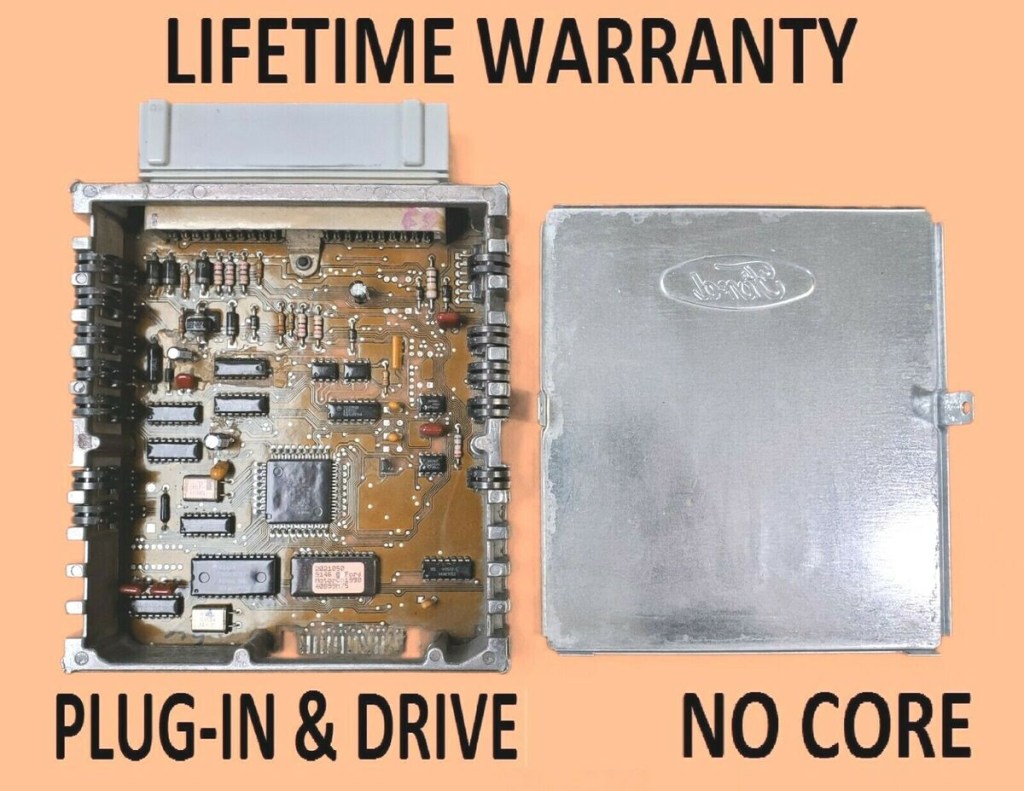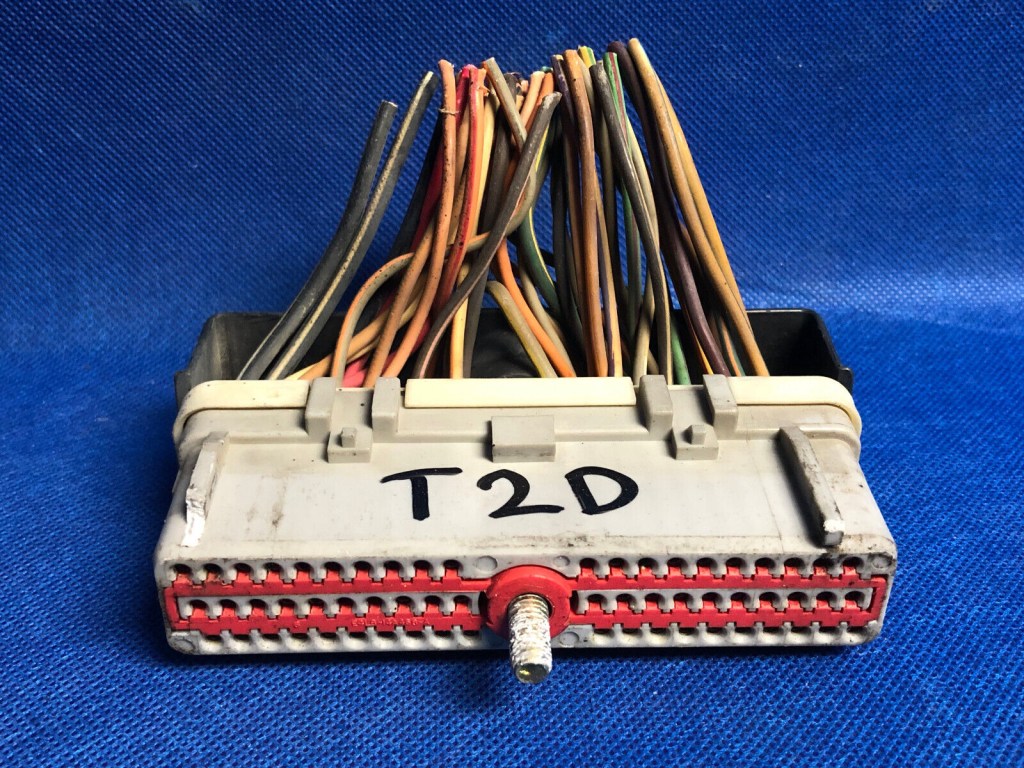Upgrade Your 1992 Ford F150 4.9L Manual Transmission With A PCM – Get Better Performance Now!
PCM for 1992 Ford F150 4.9L Manual Transmission: The Ultimate Guide
Introduction: The PCM (Powertrain Control Module) is an essential component of any vehicle’s engine management system. It controls various functions such as fuel delivery, ignition timing, and emissions controls. For the 1992 Ford F150 4.9L with a manual transmission, the PCM plays a critical role in ensuring optimal performance and efficiency. In this article, we will provide a comprehensive guide to the PCM for 1992 Ford F150 4.9L manual transmission, including its key features, controls, functionalities, and other important information that every owner should know.
What is the PCM for 1992 Ford F150 4.9L Manual Transmission?
What: The PCM for the 1992 Ford F150 4.9L with a manual transmission is a computerized control module that manages the engine’s operation. It receives input data from various sensors and systems, analyzes the data, and adjusts the engine’s performance accordingly.
2 Picture Gallery: Upgrade Your 1992 Ford F150 4.9L Manual Transmission With A PCM – Get Better Performance Now!


Who: Every 1992 Ford F150 4.9L owner with a manual transmission should know about their PCM. Whether you’re a DIY mechanic or a professional technician, understanding how the PCM works and how to diagnose and repair any issues is essential for maintaining your vehicle’s performance and reliability.

Image Source: ebayimg.com
When: The PCM for 1992 Ford F150 4.9L with a manual transmission was designed and manufactured for that specific model year. It was built to withstand the rigors of daily driving and provide accurate control over the engine’s functions.
Where: The PCM is located in the engine compartment, usually near the battery or firewall. It is a small, rectangular-shaped device with multiple wiring harnesses connected to it.
Why: The PCM is critical to the proper functioning of the engine. It ensures that the engine runs smoothly, delivers optimal performance and fuel efficiency, and meets emissions standards.

Image Source: ebayimg.com
How: The PCM uses input data from various sensors such as the oxygen sensor, throttle position sensor, and manifold absolute pressure sensor, among others, to adjust the engine’s performance. It receives this data through a series of wiring harnesses and communicates with the engine’s actuators, such as the fuel injectors and ignition coils, to adjust their operation.
Key Features of PCM for 1992 Ford F150 4.9L Manual Transmission
Controls: The PCM controls various functions of the engine, such as fuel delivery, ignition timing, and emissions controls.
Functionalities: The PCM analyzes input data from various sensors and systems and adjusts the engine’s performance accordingly to ensure optimal performance and fuel efficiency.
Fluid Capacities: The PCM does not directly affect the vehicle’s fluid capacities. However, if the PCM is malfunctioning, it can cause issues with fuel delivery, which can affect the engine’s oil and coolant levels.
Various Models: The PCM is specific to the 1992 Ford F150 4.9L with a manual transmission. Other models and years may have different PCM configurations and functionalities.
Technologies: The PCM uses advanced technologies such as microprocessors and integrated circuits to analyze input data and adjust the engine’s performance accordingly.
User-Friendly Features: The PCM is designed to be user-friendly, with easy-to-understand error codes and diagnostic tools to help technicians diagnose and repair any issues.
Tire Maintenance: The PCM does not directly affect tire maintenance. However, if the engine is not performing optimally, it can cause uneven wear and tear on the tires, requiring more frequent maintenance.
Interior: The PCM is located in the engine compartment and does not affect the vehicle’s interior.
Exterior: The PCM does not affect the vehicle’s exterior directly, but if the engine is not running correctly, it can cause visible exhaust emissions or other issues that affect the vehicle’s appearance.
Towing Capacities: The PCM does not directly affect the vehicle’s towing capacities. However, if the engine is not running optimally, it can affect the vehicle’s ability to tow heavy loads.
Additional Resources: Additional resources such as online forums, repair manuals, and diagnostic tools are available to help owners and technicians diagnose and repair PCM issues.
Specifications: The PCM specifications for the 1992 Ford F150 4.9L with a manual transmission include the number of wiring harnesses, the type of microprocessor used, and the specific input and output signals it uses to control the engine’s performance.
Accessories: The PCM is not an accessory and does not require any additional accessories to function correctly.
Troubleshooting Guides: Troubleshooting guides are available to help owners and technicians diagnose and repair PCM issues, including error codes, sensor malfunctions, and other potential issues.
Updates and Revisions: Updates and revisions to the PCM software and hardware may be necessary to address any issues or improve performance over time.
Safety: The PCM plays a critical role in ensuring the vehicle’s safety by controlling its performance and emissions output.
Price: The price of a replacement PCM for a 1992 Ford F150 4.9L with a manual transmission varies depending on the specific model and supplier.
Digital and Online Manuals: Digital and online manuals are available to help owners and technicians diagnose and repair PCM issues.
Pros and Cons of PCM for 1992 Ford F150 4.9L Manual Transmission
Pros:
The PCM ensures optimal engine performance and fuel efficiency.
It helps to reduce emissions and meet emissions standards.
The PCM is user-friendly, with easy-to-understand error codes and diagnostic tools.
Troubleshooting guides and other resources are available to help diagnose and repair any issues.
Cons:
The PCM can malfunction, causing issues with engine performance and fuel efficiency.
Replacing or repairing a malfunctioning PCM can be costly.
The PCM may require updates or revisions over time to address any issues or improve performance.
Conclusion
Overall, the PCM for 1992 Ford F150 4.9L with a manual transmission is a critical component of the vehicle’s engine management system. It ensures optimal performance, fuel efficiency, and emissions control for the engine. Understanding how the PCM works, how to diagnose and repair any issues, and how to maintain it properly is essential for any owner or technician. With the right resources and tools, owners and technicians can ensure that their 1992 Ford F150 4.9L with a manual transmission runs smoothly and efficiently for years to come.
Rating: 4.5/5
Recommendation: We highly recommend that every 1992 Ford F150 4.9L owner with a manual transmission should read and understand this article and refer to the manufacturer’s manual for any specific information or details.
This post topic: Manual



